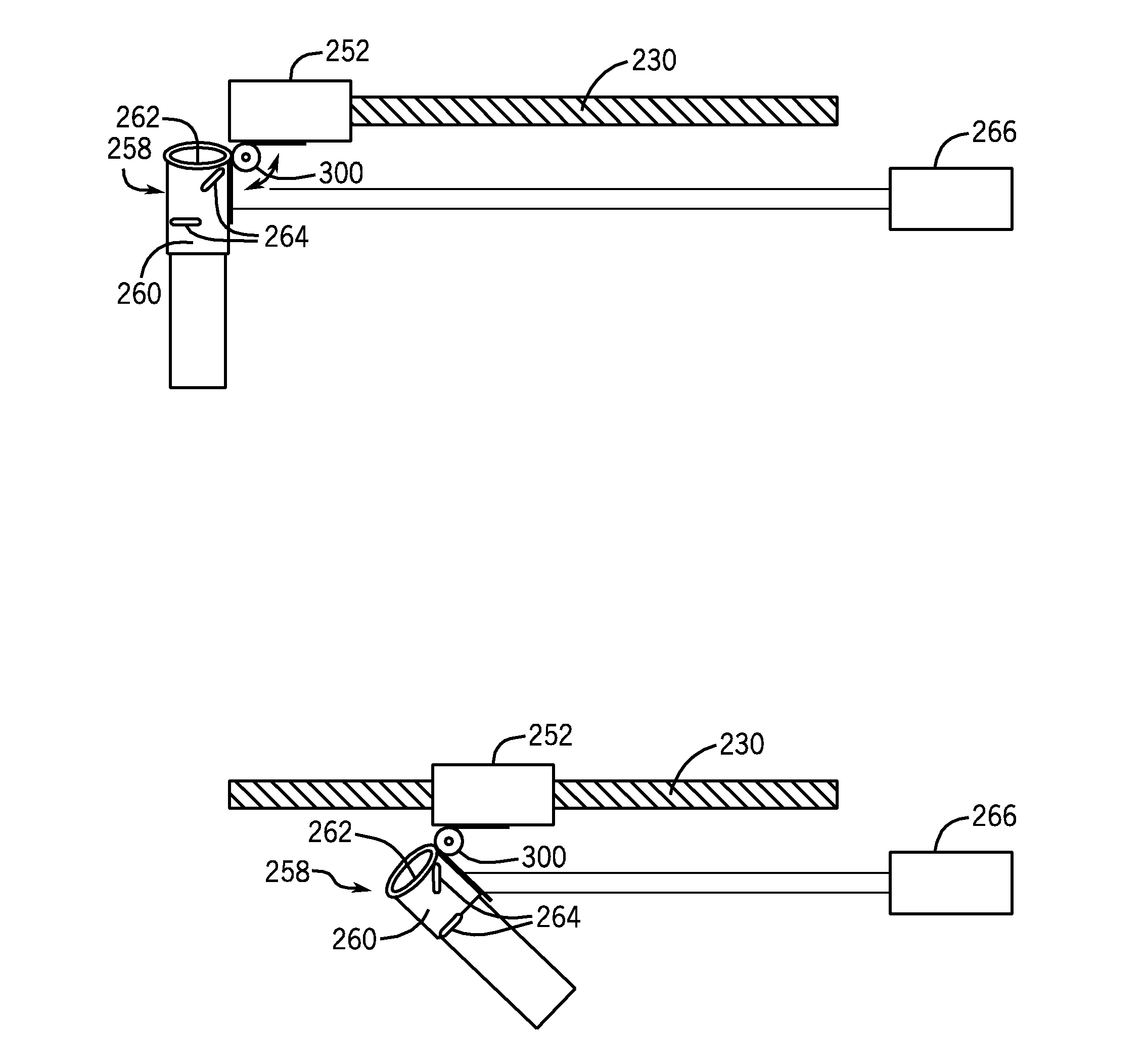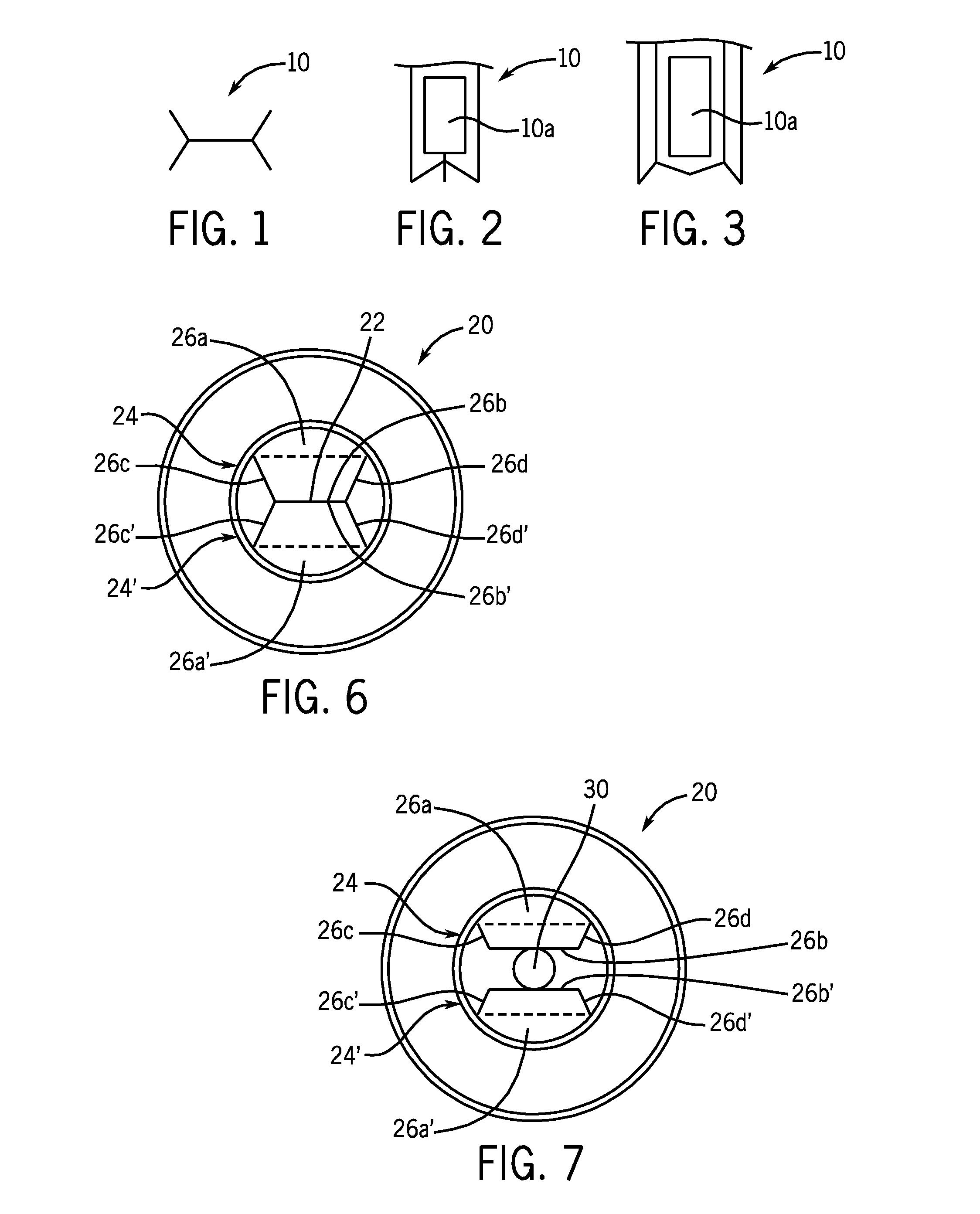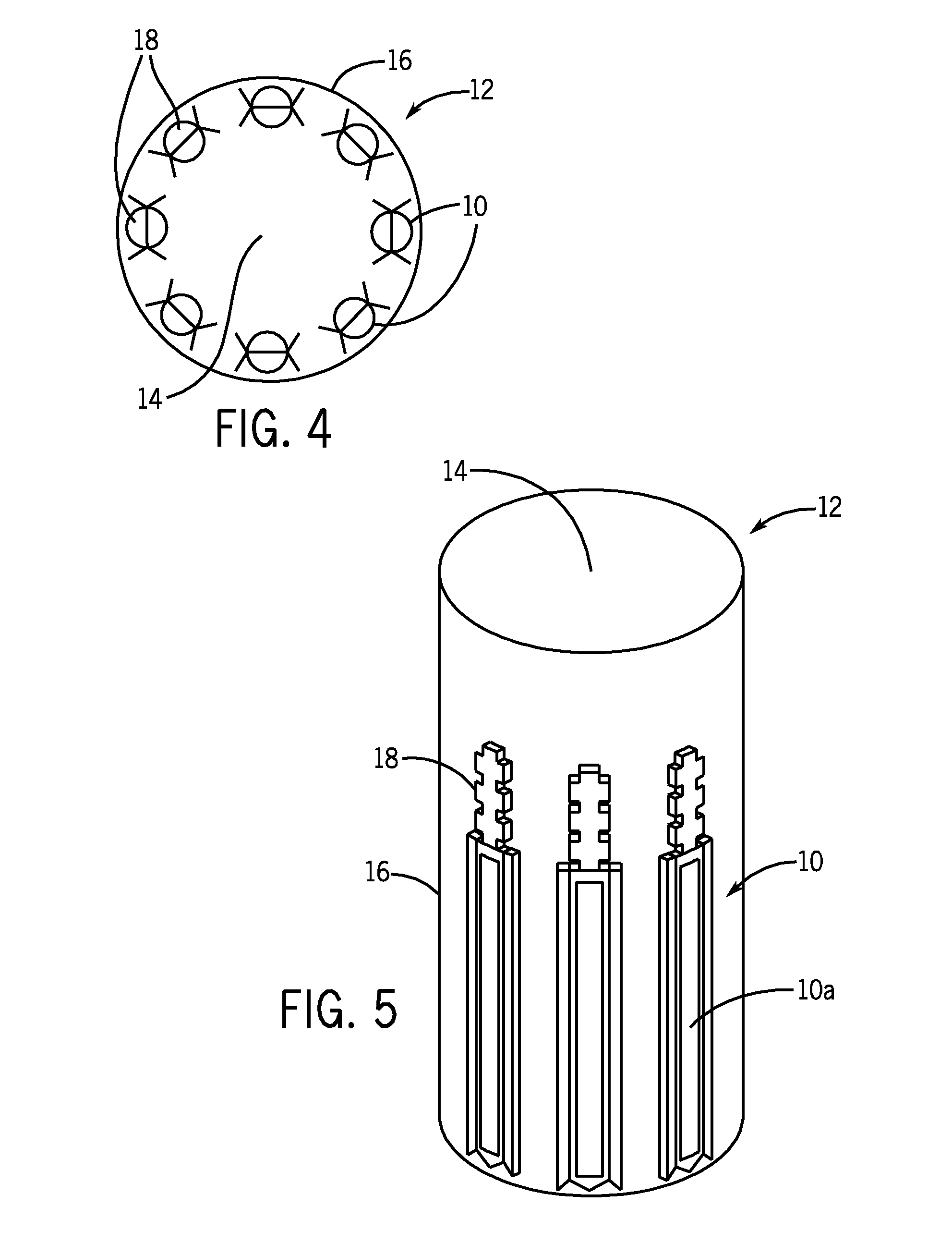System, apparatus, and method for closed tube sampling and open tube sampling for automated clinical analyzers
a clinical analyzer and automated technology, applied in the field of system, apparatus, and method of closed tube sampling and open tube sampling for automated clinical analyzers, to achieve the effects of reducing operator risks, reducing throughput, assay performance, and reducing labor requirements for sorting, balancing and centrifugation
- Summary
- Abstract
- Description
- Claims
- Application Information
AI Technical Summary
Benefits of technology
Problems solved by technology
Method used
Image
Examples
example 1
Operation of a Closed Tube Sampling System
[0202]A versatile embodiment of a closed tube sampling system includes one hematology analyzer, one immunoassay analyzer, one clinical chemistry analyzer, one sample tube aspirating module, and an agglutination reagent addition module. See FIG. 9. An operator loads sample tube carriers holding sample collection tubes having stoppers and containing samples of whole blood that have not undergone centrifugation. The robotic sample handler prioritizes carriers holding sample collection tubes for STAT assays ahead of carriers containing sample collection tubes for routine assays. The barcode reader of the closed tube sampling system reads the barcodes on the sample collection tubes, detects the presence of stoppers on the sample collection tubes, if any, the stoppers on the sample collection tubes (if required), and transfers a specified volume of sample to an aliquot tube. The sample tube carrier can then be removed from the system. The sample i...
example 2
Operation of a Closed Tube Sampling System
[0205]FIG. 9 illustrates an embodiment of a closed tube sampling system that has one hematology analyzer, one immunoassay analyzer, one clinical chemistry analyzer, and one sample tube aspirating module.
[0206]In order to operate the system, the operator of the system loads sample tube carriers having sample collection tubes having stoppers and containing uncentrifuged samples of whole blood. The robotic sample handler prioritizes sample tube carriers holding sample collection tubes for STAT assays ahead of sample tube carriers containing sample collection tubes for routine assays. A barcode reader reads the barcodes on the sample collection tubes, detects the presence of stoppers on the sample collection tubes, if any, a piercing element pierces the stoppers on the sample collection tubes (if required) or a cutting blade cuts slits in the stoppers (if required), and a specified volume of sample is transferred to an aliquot tube. The sample t...
example 3
Operation of a Closed Tube Sampling System
[0209]FIG. 9 illustrates an embodiment of a closed tube sampling system that includes one hematology analyzer, one immunoassay analyzer, one clinical chemistry analyzer, one sample tube aspirating module, and a continuous access centrifugation module. In order to operate the system, the operator loads sample tube carriers holding sample collection tubes having stoppers and containing uncentrifuged samples of whole blood. The robotic sample handler prioritizes sample tube carriers holding sample collection tubes for STAT samples ahead of sample tube carriers holding sample collection tubes for routine analyses. A barcode reader reads the barcodes on the sample collection tubes, detects the presence of stoppers on the sample collection tubes, if any, a piercing element pierces the stoppers of the sample collection tubes (if required) or a cutting blade forms slits in the stoppers (if required), and a specified volume of sample is transferred t...
PUM
| Property | Measurement | Unit |
|---|---|---|
| Angle | aaaaa | aaaaa |
| Angle | aaaaa | aaaaa |
| Weight | aaaaa | aaaaa |
Abstract
Description
Claims
Application Information
 Login to View More
Login to View More - R&D
- Intellectual Property
- Life Sciences
- Materials
- Tech Scout
- Unparalleled Data Quality
- Higher Quality Content
- 60% Fewer Hallucinations
Browse by: Latest US Patents, China's latest patents, Technical Efficacy Thesaurus, Application Domain, Technology Topic, Popular Technical Reports.
© 2025 PatSnap. All rights reserved.Legal|Privacy policy|Modern Slavery Act Transparency Statement|Sitemap|About US| Contact US: help@patsnap.com



